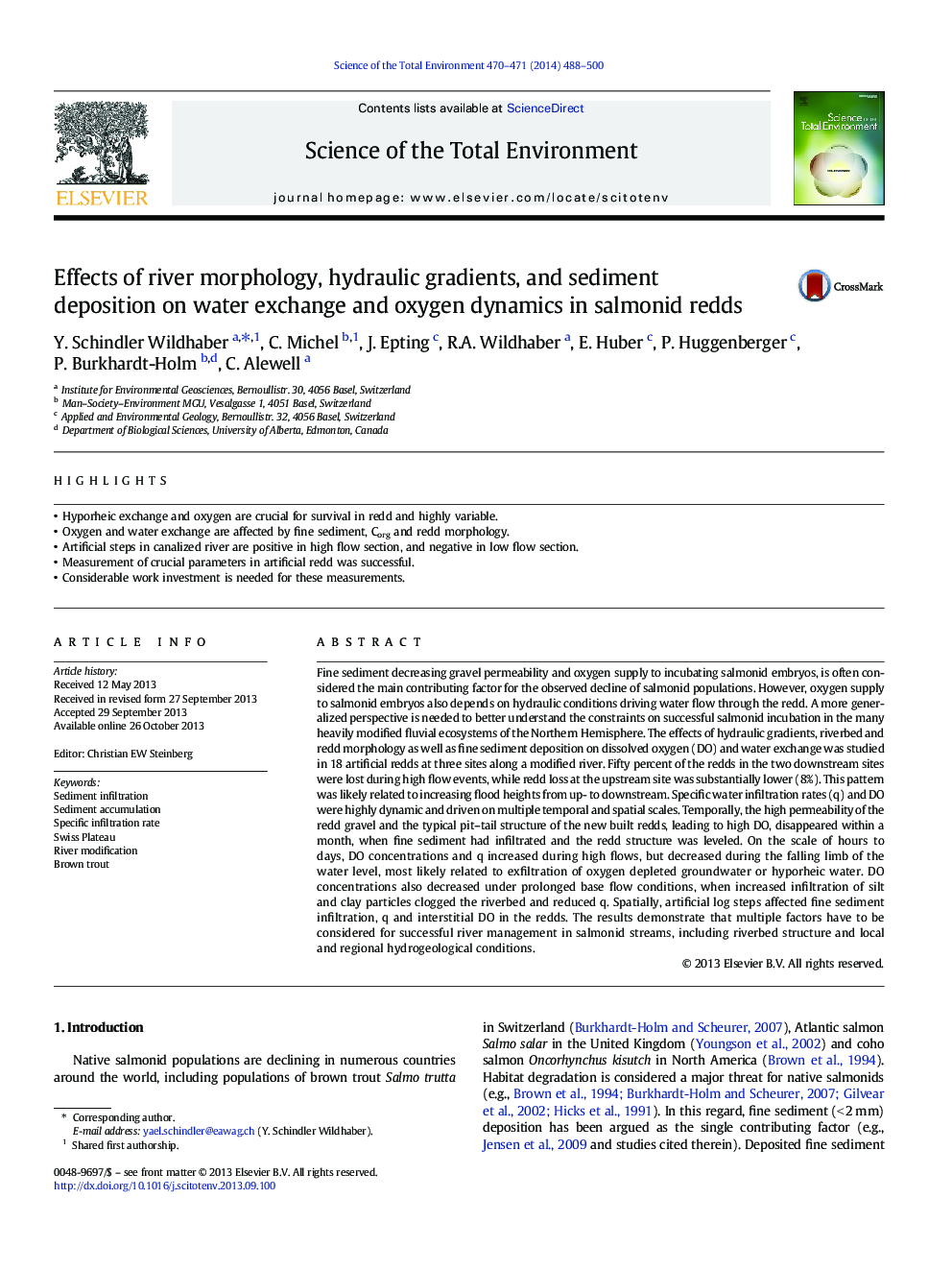| کد مقاله | کد نشریه | سال انتشار | مقاله انگلیسی | نسخه تمام متن |
|---|---|---|---|---|
| 6331404 | 1619793 | 2014 | 13 صفحه PDF | دانلود رایگان |
عنوان انگلیسی مقاله ISI
Effects of river morphology, hydraulic gradients, and sediment deposition on water exchange and oxygen dynamics in salmonid redds
ترجمه فارسی عنوان
اثر مورفولوژی رودخانه، شیب هیدرولیکی و رسوب بر روی مبادله آب و دینامیک اکسیژن در قرمز سالمونید
دانلود مقاله + سفارش ترجمه
دانلود مقاله ISI انگلیسی
رایگان برای ایرانیان
کلمات کلیدی
نفوذ رسوب، انباشت رسوب، نرخ نفوذ خاص، فلات سوئیس، اصلاح رودخانه، ماهی قزل آلا قهوه ای،
موضوعات مرتبط
علوم زیستی و بیوفناوری
علوم محیط زیست
شیمی زیست محیطی
چکیده انگلیسی
Fine sediment decreasing gravel permeability and oxygen supply to incubating salmonid embryos, is often considered the main contributing factor for the observed decline of salmonid populations. However, oxygen supply to salmonid embryos also depends on hydraulic conditions driving water flow through the redd. A more generalized perspective is needed to better understand the constraints on successful salmonid incubation in the many heavily modified fluvial ecosystems of the Northern Hemisphere. The effects of hydraulic gradients, riverbed and redd morphology as well as fine sediment deposition on dissolved oxygen (DO) and water exchange was studied in 18 artificial redds at three sites along a modified river. Fifty percent of the redds in the two downstream sites were lost during high flow events, while redd loss at the upstream site was substantially lower (8%). This pattern was likely related to increasing flood heights from up- to downstream. Specific water infiltration rates (q) and DO were highly dynamic and driven on multiple temporal and spatial scales. Temporally, the high permeability of the redd gravel and the typical pit-tail structure of the new built redds, leading to high DO, disappeared within a month, when fine sediment had infiltrated and the redd structure was leveled. On the scale of hours to days, DO concentrations and q increased during high flows, but decreased during the falling limb of the water level, most likely related to exfiltration of oxygen depleted groundwater or hyporheic water. DO concentrations also decreased under prolonged base flow conditions, when increased infiltration of silt and clay particles clogged the riverbed and reduced q. Spatially, artificial log steps affected fine sediment infiltration, q and interstitial DO in the redds. The results demonstrate that multiple factors have to be considered for successful river management in salmonid streams, including riverbed structure and local and regional hydrogeological conditions.
ناشر
Database: Elsevier - ScienceDirect (ساینس دایرکت)
Journal: Science of The Total Environment - Volumes 470â471, 1 February 2014, Pages 488-500
Journal: Science of The Total Environment - Volumes 470â471, 1 February 2014, Pages 488-500
نویسندگان
Y. Schindler Wildhaber, C. Michel, J. Epting, R.A. Wildhaber, E. Huber, P. Huggenberger, P. Burkhardt-Holm, C. Alewell,
